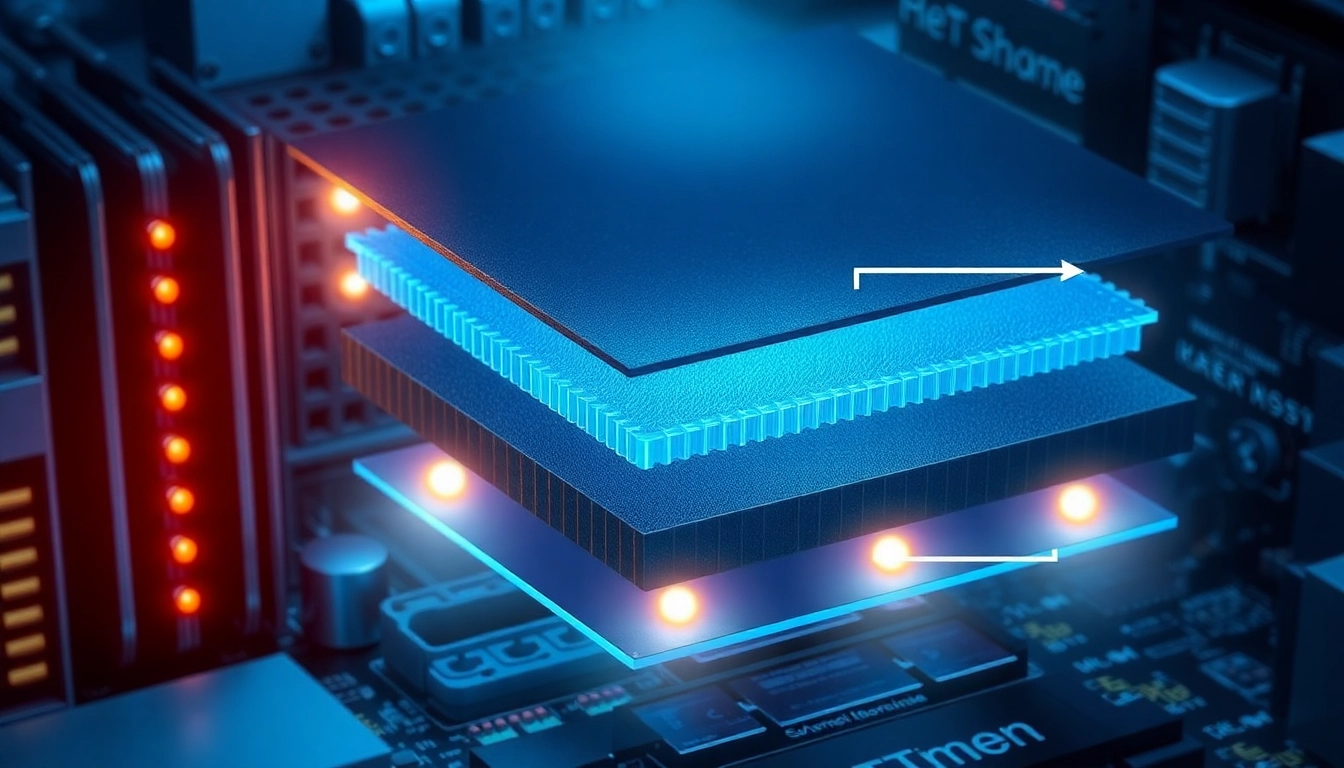Understanding Thermal Management Materials
In an era where electronics are omnipresent in almost every aspect of life, the importance of effective heat management has become increasingly critical. Efficient thermal management materials are essential for the longevity and performance of electronic devices. This article delves into the intricate world of thermal management materials, exploring their definitions, types, applications, key features, and future trends.
Definition and Importance of Thermal Management
Thermal management refers to the use of materials and methods to control the temperature of electronic devices. As electronic components generate heat during operation, improper heat dissipation can lead to reduced performance, accelerated wear, or even catastrophic failure. Thus, thermal management materials are central to ensuring optimal operation, reliability, and safety within electronic systems.
Types of Thermal Management Materials
There are several categories of thermal management materials, each designed to address specific thermal challenges. These include thermal interface materials, phase change materials, thermal pastes, adhesives, and gap fillers. Understanding these materials’ functions and characteristics is vital for selecting the right solution for a given application.
Applications in Electronic Devices
Thermal management materials find applications in various electronic devices, such as computers, smartphones, electric vehicles, and industrial equipment. Each application may have different thermal challenges based on the design, size, and energy requirements, dictating the specific type of thermal management solution needed.
Key Features to Consider in Thermal Management Materials
Thermal Conductivity and Performance
The primary function of thermal management materials is to facilitate efficient heat transfer. Thermal conductivity, measured in Watts per meter-Kelvin (W/mK), is a crucial parameter that defines how efficiently heat passes through a material. Higher thermal conductivity ratings indicate better performance in heat dissipation, which is vital for preventing overheating in sensitive components.
Material Durability and Lifespan
Durability is another essential characteristic when selecting thermal management materials. The chosen material must withstand the thermal cycles and environmental conditions typical of the device to ensure it performs effectively over its intended lifespan. This factor often includes evaluating thermal expansion resistance, tensile strength, and resistance to environmental degradation.
Cost-Effectiveness and Value
While high-performing thermal management materials may come at a premium price, their long-term benefits can outweigh initial costs. Evaluating the total cost of ownership, which includes installation, maintenance, and potential equipment replacements due to failures, is vital for assessing the true value of a thermal management solution.
Common Types of Thermal Management Materials
Thermal Interface Materials (TIMs)
Thermal interface materials (TIMs) are essential in bridging the gap between heat-generating components and heat sinks. Typically made of silicone, graphite, or metal compounds, TIMs reduce thermal resistance and enhance heat transfer efficiency. They can come in various forms, including pads, pastes, and sheets, and their choice depends on the specific thermal requirements of the application.
Phase Change Materials (PCMs)
Phase change materials are designed to absorb and release thermal energy during the transition from solid to liquid and vice versa. This property allows them to maintain more stable thermal conditions, making them ideal for applications where overheating is a concern. PCMs are particularly useful in energy storage systems and high-performance electronics.
Thermal Pastes and Adhesives
Thermal pastes fill microscopic air gaps between surfaces, ensuring improved thermal contact. They are often used in conjunction with CPUs, GPUs, and LED applications. Adhesives offer both adhesion and thermal management capabilities, making them suitable for bonding components while managing heat effectively.
Best Practices for Selecting Thermal Management Materials
Evaluating Thermal Requirements
Before selecting thermal management materials, it is crucial to evaluate the thermal performance requirements of the specific application. This involves analyzing factors such as peak heat generation, ambient temperature conditions, and any potential constraints related to space and weight.
Matching Materials with Applications
Choosing the appropriate material requires not only technical knowledge but also an understanding of the intended application. Factors such as operational environment, cost limitations, and regulatory compliance should guide this decision. For example, high-performance environments may warrant the use of materials with superior thermal conductivity, while cost-sensitive projects might lean towards more economical options.
Testing and Compliance Considerations
Compliance with industry standards and thorough testing of thermal management materials are essential to ensure reliability. Manufacturers should evaluate materials under real-world conditions and comply with standards like ROHS or REACH to guarantee that materials do not pose environmental or health risks.
Future Trends in Thermal Management Technologies
Innovations in Material Science
Research into new materials and composites continues to evolve, with a focus on enhancing thermal conductivity, reducing weight, and improving cost-effectiveness. Future innovations may include the development of graphene-based materials or other nanotechnology applications that promise superior thermal performance.
Integration of Smart Technologies
As the Internet of Things (IoT) proliferates, thermal management technologies are beginning to integrate smart functionalities. This includes the use of sensors and algorithms to monitor temperature variations in real time, enabling dynamic adjustments in thermal strategies. Such advancements can significantly improve the reliability and efficiency of electronic systems.
Environmental Considerations and Sustainability
With increasing awareness of environmental issues, the development of sustainable thermal management materials is becoming paramount. This shift includes using biodegradable resources, reducing carbon footprints during production, and ensuring recyclability of end-products to meet consumer expectations and regulatory demands.
